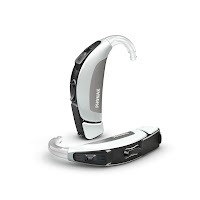
After an audiologist has determined how well an individual is able to hear speech in noise, tolerate loud sounds, and understand rapid speech, three potential solutions for hearing better in noisy places can be explored. While it is possible to have normal hearing and yet have difficulty understanding speech in noisy environments, it is often the case that an individual with speech-in-noise problems also has an accompanying hearing loss. A hearing loss that makes it difficult to discern speech in noise can be treated using digital hearing aids with highly developed digital noise suppression. Major hearing aid manufacturers produce hearing aids at three different technology levels (Level 1, 2, and 3). These three technology levels are differentiated by the sophistication of the microphones within the hearing aids and the number of adjustable channels. The directionality of the hearing aid microphones differs between each level and makes hearing in noise more possible. For example, a hearing aid with multi-directional, adaptive microphones will focus on and amplify speech from its source- whether it be from the side, behind, or in front of the individual. In general, the noisier your world, the better you will do with more advanced hearing aids.
For more information on digital hearing aids, microphone sophistication and directionality, and solutions for hearing in noise,
click here.
More later this week on the other two solutions for hearing better in noisy places...










